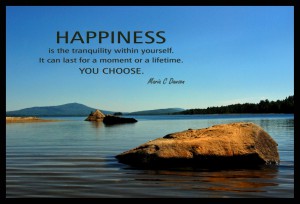To escape fear, you have to go through it, not around it.
— Richie Norton
We all feel anxious. It is a given that from time to time we will have to deal with something that makes us uncomfortable – a test, a job interview, a blind date, or a new job, just to name a few. Anxiety is not necessarily a bad thing; without some anxiety we might not do our best in a job interview or study enough to take a test. But when anxiety becomes excessive and interferes in our daily lives, then it becomes a real problem.
Anxiety Comes in All Shapes and Forms
There are various types of anxiety. Some people feel anxious every day as they go about their normal routines. Some people cannot drive a car, leave home, or learn new things because they feel too anxious and are afraid that something bad will happen to them or to someone else. When anxiety becomes excessive, it can lead to panic attacks. Many anxiety disorders begin in childhood and tend to persist into adulthood if no treatment is offered.
What is Social Anxiety?
Social anxiety is one of the more debilitating anxiety disorders. It is also known as social phobia, is more common than most people realize. Social anxiety involves an intense fear or anxiety of social situations, in which an individual feels that he or she will be observed and judged by others. In such settings, people constantly worry that they will be found wanting in some way, and thought of as stupid, boring, unpleasant, or unlikable, just to name a few. They may be afraid that they won’t measure up to what they think are others’ perceptions, and believe that they are negatively valued by others.
A person with social anxiety may withdraw from others in order to avoid the distress of interaction, which results in them becoming isolated. Many people struggle with self-consciousness or shyness, or feel nervous in social situations, but that is not necessarily the same as social anxiety. For some people, all interactions are painful. For others, it is only certain social situations that cause discomfort, such as eating in restaurants, going to parties, or speaking in public. And for yet others, the perception that they are not good enough keeps them from engaging socially with anyone.
Facing Your Fears
One of the most helpful ways of dealing with social anxiety is to face your fears. Avoidance only breeds anxiety and more fear.
What can you do to improve your anxiety symptoms? Here is a partial list of steps you can take to improve your symptoms.
1) Breathe.
When we become anxious, our breathing becomes shallow and rapid. To switch from this “fight or flight” response, try taking deep, slow breaths. This relaxes your nervous system, and helps you to begin thinking more clearly.
2) Challenge Your Thoughts.
Learn to recognize your unhelpful, automatic thoughts, such as those that include words such as “never,” “always,” “can’t,” “impossible,” “no one,” and “everyone.” The more your brain hears these words, the more it believes them to be true. Learn to eliminate such all-or-nothing thinking, and replace it with more positive self-talk. For example, if your brain hears, “I can’t talk to strangers,” then you won’t be able to do so.
 3) Stop “Mind Reading.”
3) Stop “Mind Reading.”
If you assume that you know what others are thinking about you, that is mind reading. There is no way for you to know for sure what anyone thinks without asking them, so assuming they share your negative feelings about you is faulty.
4) Step Out.
It may be helpful to take a social skills class, or to volunteer to do something that seems enjoyable. For example, if you like animals, becoming a volunteer at a shelter might be something that would help you.
5) Seek Help.
You don’t have to suffer alone. Social anxiety symptoms can be treated and helped with therapy.
Christian Counseling to Overcome Social Anxiety
We are here to help. You don’t have to go through your social anxiety alone, and guidance from a therapist can provide hope. As a Christian counselor, I am here to help you heal.
“We have a lot of anxieties . . .” courtesy of QuotesEverlasting, and aboutWinstonChurchill.com, Flickr CreativeCommons (CC BY 2.0); “Happiness,” Courtesy of Maria Dawson, Flickr CreativeCommons (CC BY-ND 2.0)



